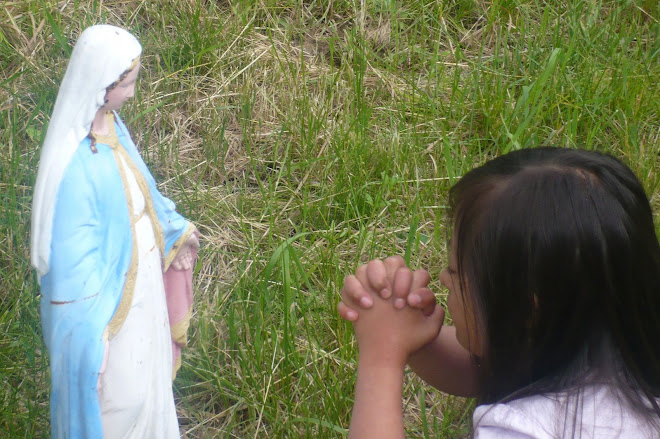La Via Crucis, the Hispanic Way of the Cross
Many Catholics are familiar with the Stations of the Cross, with 14 sculptures representing events in Christ’s condemnation by Pontius Pilate to his Body being laid in the tomb borrowed from Joseph of Arimethea. You see them on the walls of your parish church, or outdoors at retreat houses or shrine. This is a custom which dates back to the Middle Ages in Europe, when devout Catholics who couldn’t make the pilgrimage to the Holy Land tried to recreate the famous pilgrimage sites from Christ’s Passion, with the faithful walking from one to another, praying and meditating on how painfully our salvation was won. We try to ‘do the stations’ in Lent and Holy Week as a family. We also have been privileged to participate in several Via Crucis with the Hispanic Community, we have never seen the stations the same way again. It’s an unforgettably emotional recreation of Christ’s Passion which will serve as a lesson to your family, deepening your joy at the Resurrection on Easter Sunday.
In Central America and Mexico, the entire community prepares for the Via Crucis for weeks, roles are handed out, parts are learned, props are made and costumes are sewn. Then, fourteen family’s homes are selected in the community and given plaques representing one of the fourteen Stations of the Cross. On Good Friday they will proudly display their plaque, decorated with flowers in front of their home, which tells the community that the Via Crucis will stop at their home. At noon, the entire tableau of the Passion of the Christ will be reenacted in living color, with a narrator telling the story, and the priest reading the parts of Jesus while a young man acts out Christ’s Passion. The faithful follow this solemn procession through the streets, as Jesus is carrying the cross, meeting with His mother, consoling the weeping women of Jerusalem, Veronica wiping His face with her veil, His three falls, and finally His crucifixion, death, and burial. They pray the prayers with the priest, and between each Station, they will sing a hymn, like “Perdona Su Pueblo Senor” or “Pardon Your People”. Each participant looks inward at his own soul, begging Jesus pardon for his sins as he participates in the re-enactment of the events of Good Friday.
At the climax of the Via Crucis, the man who plays Christ will be ‘nailed’ to the Cross very dramatically, and spend a long time there while the priest reads “Las Siete Palabras” or the Seven Last Words Christ spoke on the Cross from “Father, forgive them, for they know not what they do” to “It is finished, into Thy hands I commend my spirit”.
I attended a very moving Via Crucis in Marietta, Georgia, where the ‘dead’ body of Christ, was carried into the Church, and laid in the sanctuary in front of the altar, while the priest gave a homily, and the faithful came forward to kiss the cross. (See the montage below)
There is an air of solemnity around these events which transfer down to the youngest children; they watch at the passion play from their father’s shoulders. This way, the faith is brought down to the next generation in an unforgettable experience. I have long held the theory that the reason Hispanics have such wonderful customs for Good Friday, and fewer customs for Easter Sunday, is because, at this time in history, their lives more closely reflect the crucifixion, and they easily relate to the Lord’s cross. One of the Spanish hymns sung in the Via Crucis ends,”Mas grande son mis culpas, mas grande tu bondad” or “the greater my sins, Lord, the greater your goodness”. Thanks to the Via Crucis, the Hispanic community is able to contemplate the sacrifice the Lord made for us on Good Friday, seeing in His blood and pain to the immeasurable love He has for each one of His children.


No comments:
Post a Comment